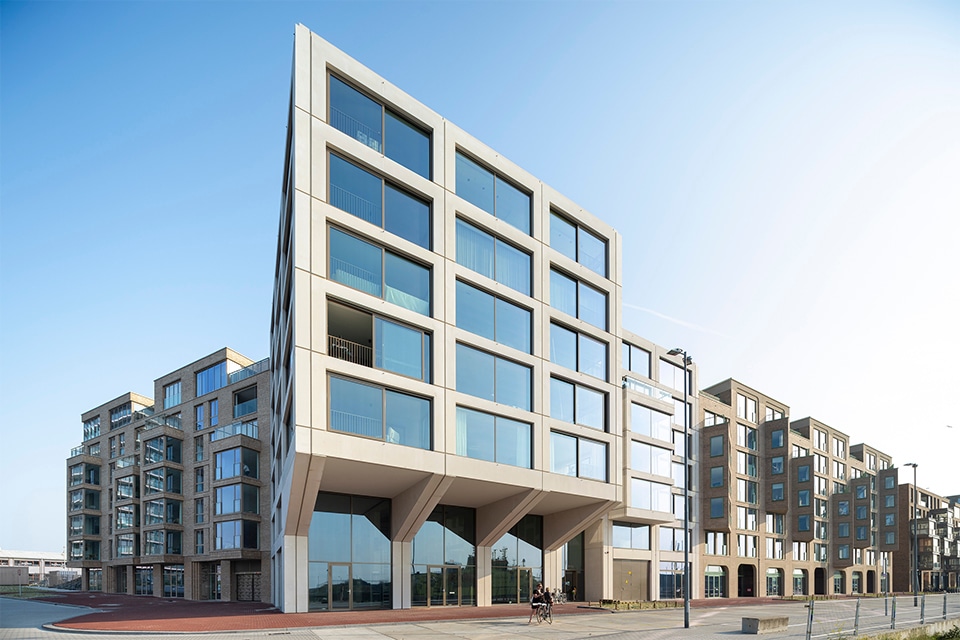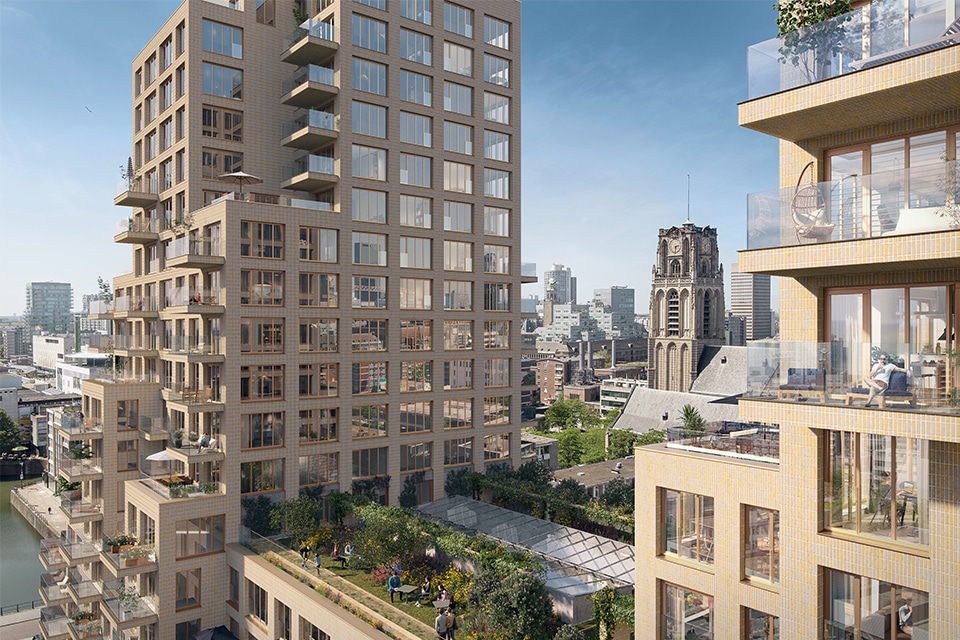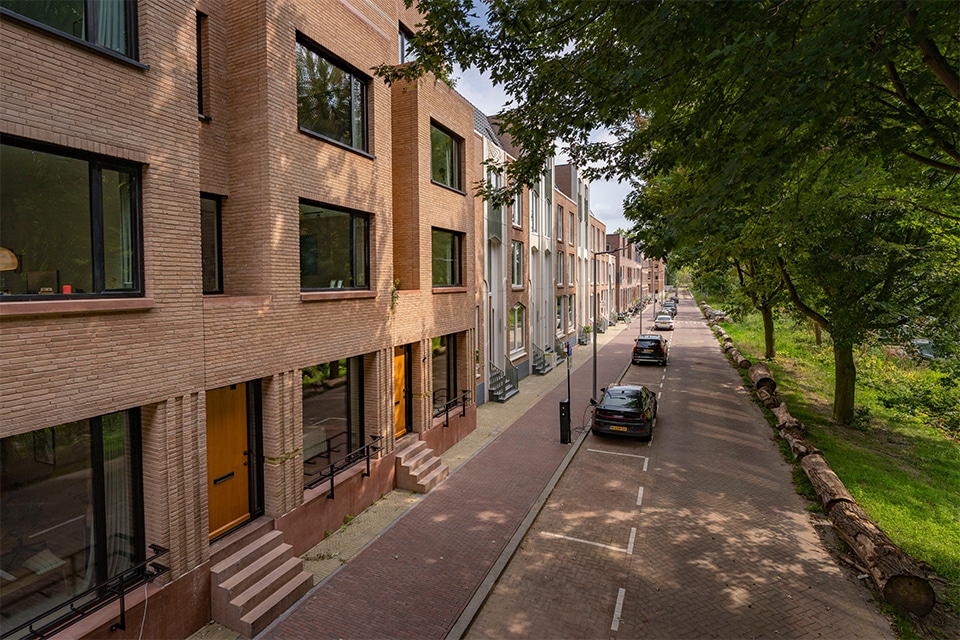
A building where people want to work. Designing with sustainability in mind
Client GLP wanted its new distribution center to be a sustainable logistics building that also provides a pleasant and healthy working environment. Stripesarchitects and Adamasgroep worked together on the design. The combination had previously designed buildings for GLP.
Marc Bell is architect and principal of Stripesarchitects. "We created the design and handled the engineering through to the environmental permit and technical design." Adamas Group is an engineering and consulting firm that focuses specifically on the development of healthy, sustainable and circular real estate. Olaf Buter was involved in the project from Adamas Group. Buter: "Sustainability is no longer as non-committal as it was, given European regulations. If you work together interdisciplinary from the beginning based on the sustainability and health criteria, it works much easier and you naturally get a good, sustainable and circular building."
Healthy building materials
There are no health requirements for construction yet, except for office buildings. Buter and Bell think the bar is too low and work only with healthy building materials. These can be reused in the future and so the building keeps a higher residual value. They also make sure that enough clean air comes in and that ventilation is fitted with the right filters. Buter: "With better ventilation, you get a building where people function better." Bell adds: "The same goes for the amount of daylight. With a better working climate, people get sick less often, are more productive and, as an employee, they like to stay working for you. Viewed in that sense, sustainable construction is cheaper. It will not be a gray box on an industrial estate, but a place where you want to work. In GLP's distribution center, a lot of glass is used. Not only in the office, but also on the mezzanine. The shipping lane has skylights." Such a building can only come about if the client is open to it, the two know. "Extra efforts cost extra money. Although there are various incentive schemes for it."




